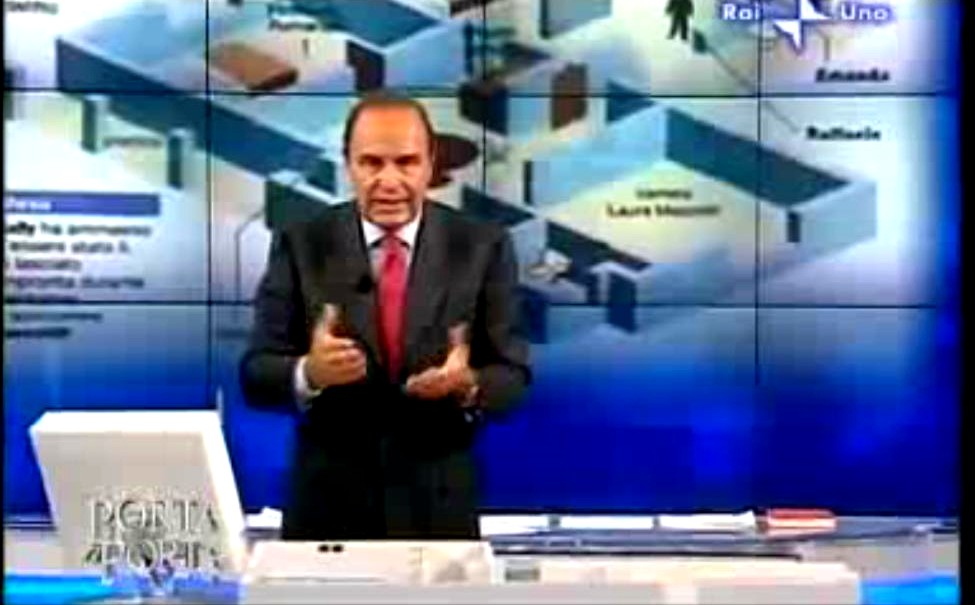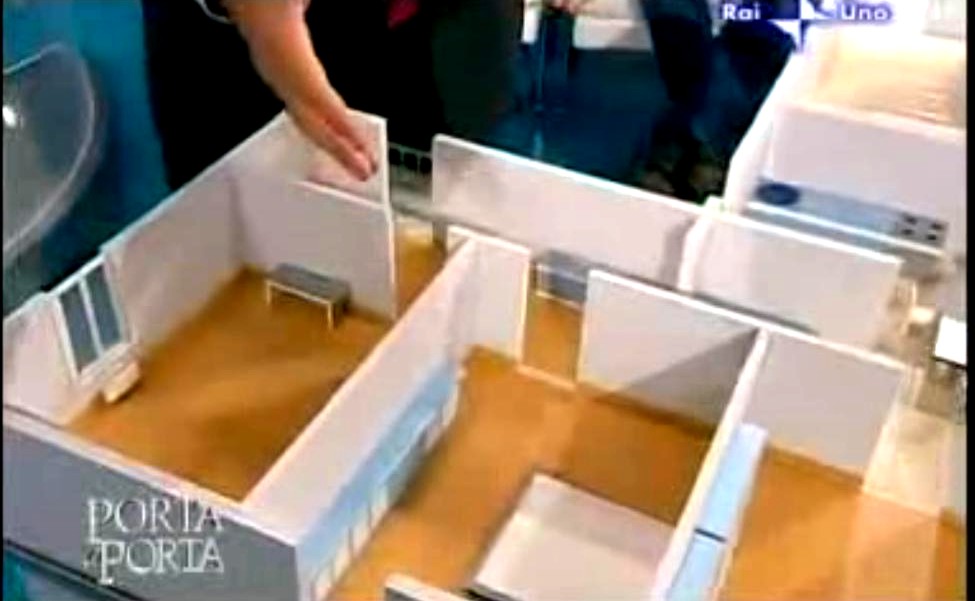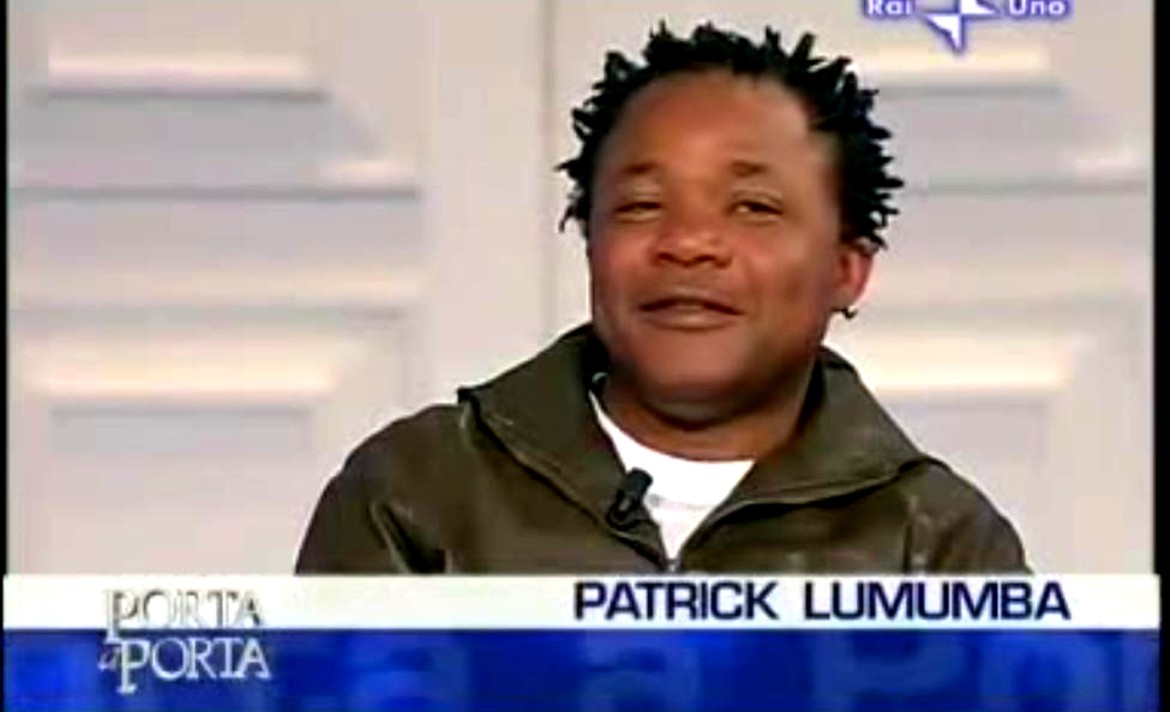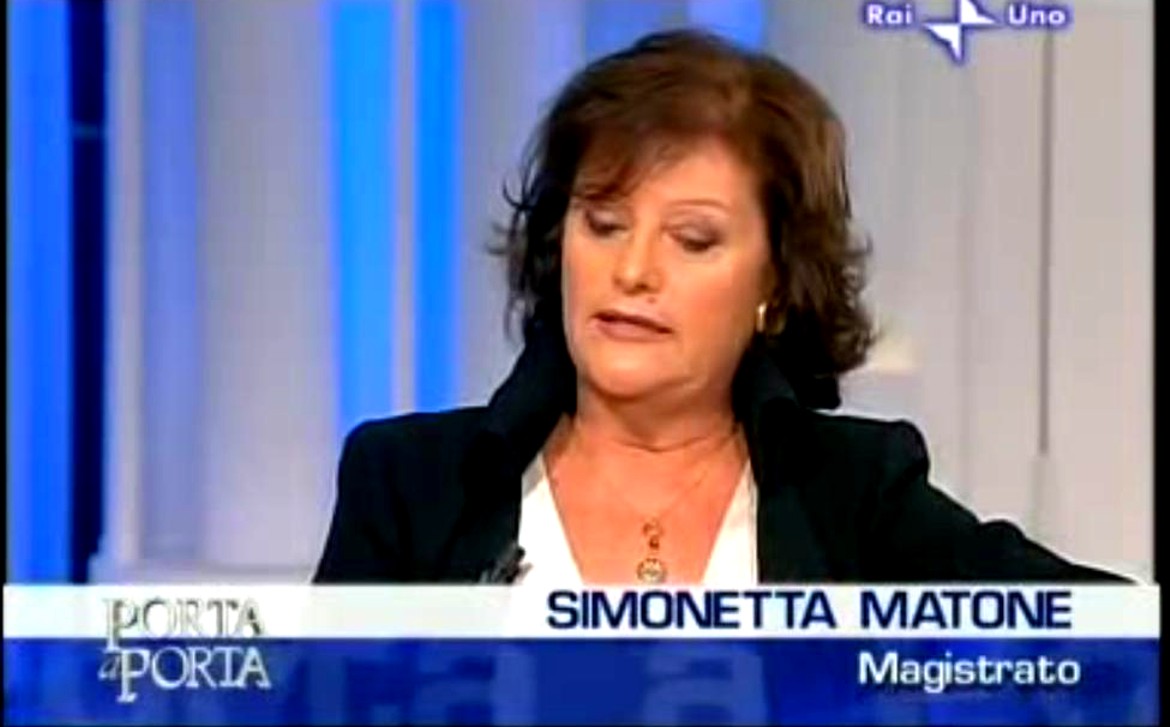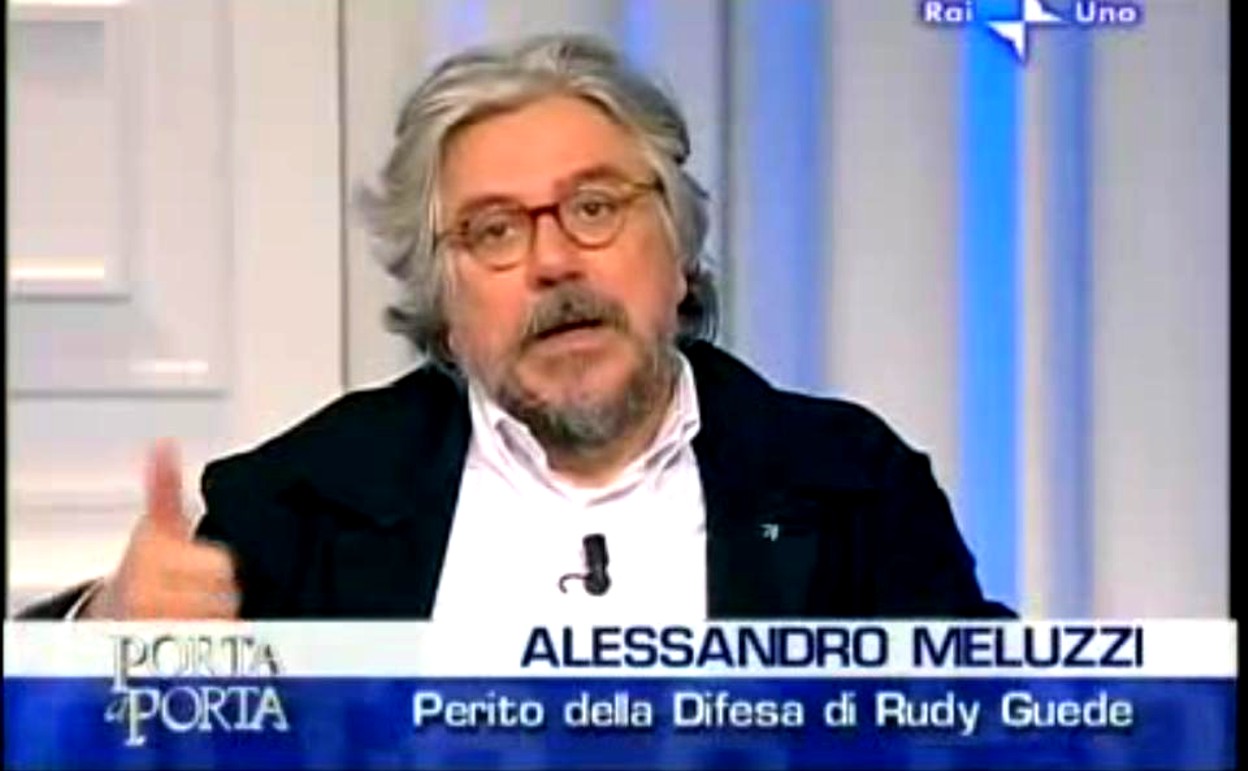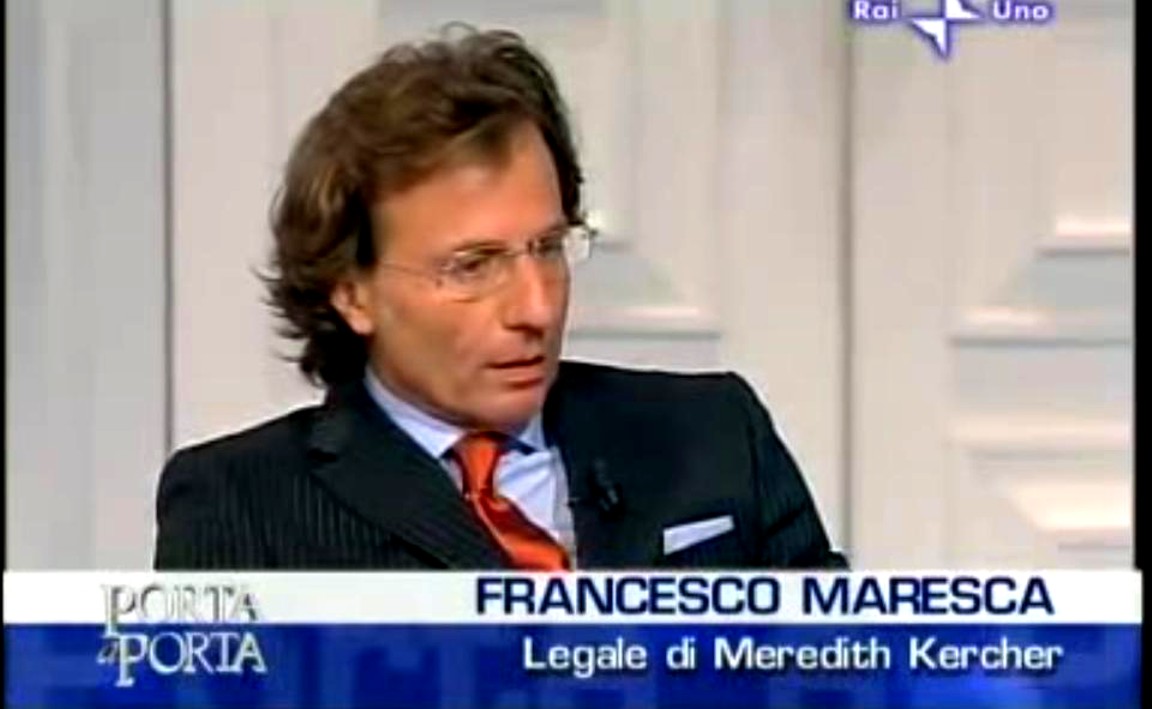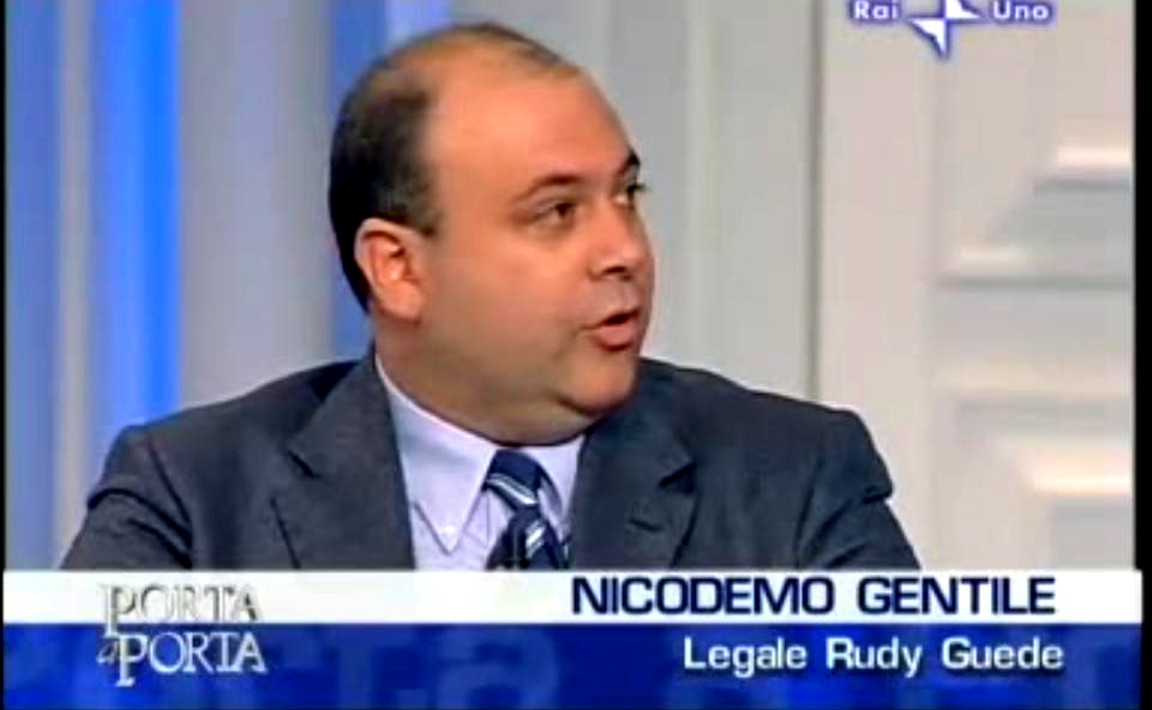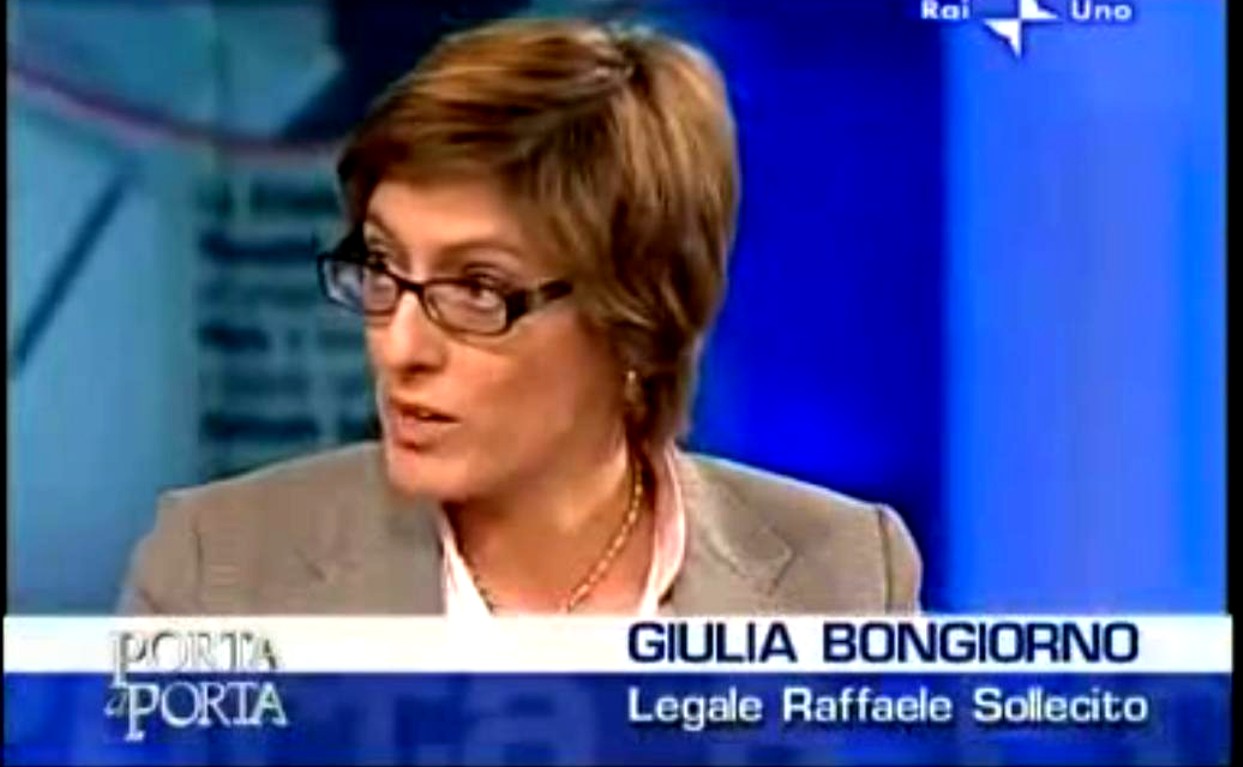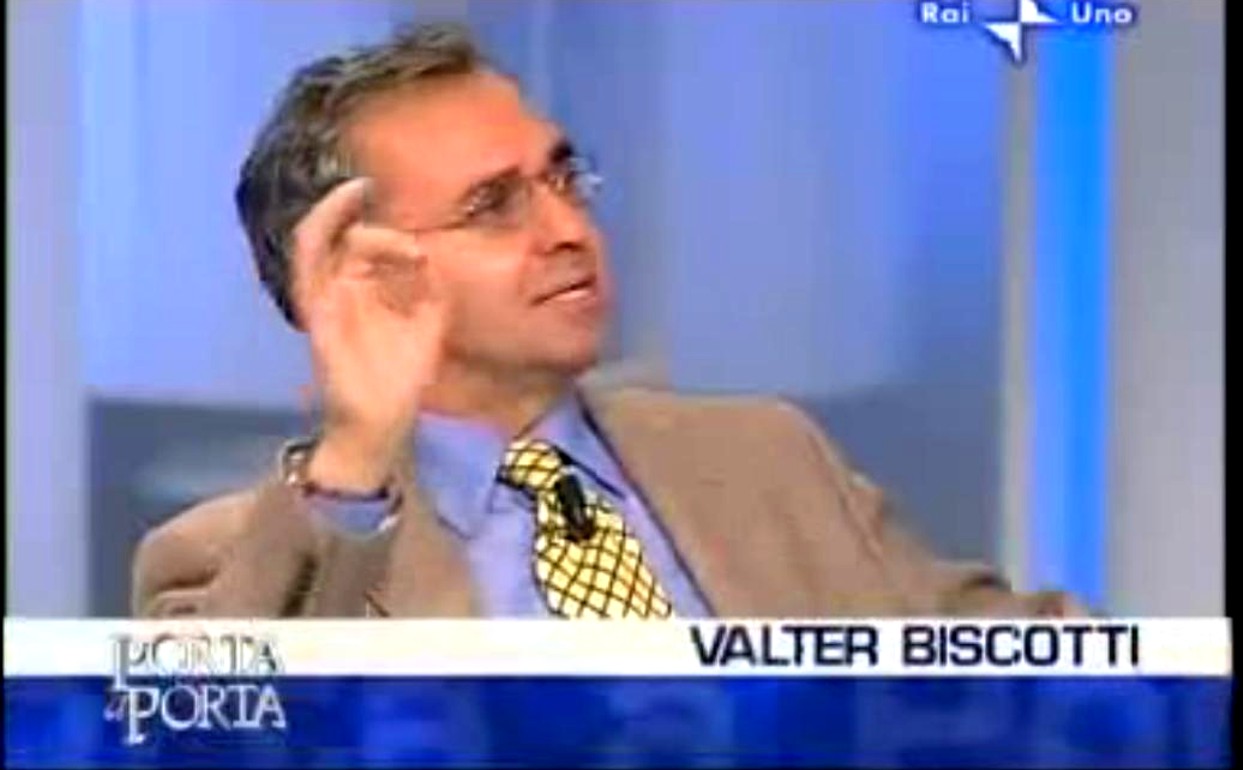
Wednesday, May 12, 2010
How Each of The Three Subtly But Surely Pushed The Other Two Closer to The Fire (Part 1 of 4)
Posted by Cesare Beccaria
Most people in Italy believe the two trials ended correctly because they have been exhaustively reported-to throughout.
Also they have been able to follow the machinations and the twists and turns of the three defendants and defenses in real time. And the court documents and transcripts are all issued in Italian, and some are officially posted on the Internet.
The media coverage in Italian in Italy exceeds the media coverage in English in the UK and USA by a factor of five or ten. And there have been a number of very highly rated and balanced TV talk-shows on the case, in the course of which the defenses were not able to muzzle or slant the discussions - even if they ever considered doing such a thing.
These TV talk-shows on the case have included the most prestigious of all such shows in Italy, Porta a Porta, which offered hours of discussion by all the legal players except for Amanda Knox’s team in December 2007, October 2008, February 2009, and December 2009.
The Porta a Porta discussions are at various points referred to here, and the images used here are from those shows.
This is a four-part analysis, based mostly on Italian-language sources, of the many twists and turns of each of the defendants (as they then were) and their defense teams when intent on giving themselves an edge while often slyly selling out the others.
This interplay has been evident almost as much between Knox and Sollecito and their teams as it has between either of them and Rudy Guede, though rather less hostile.
It is worth pointing out two things up-front. First, that this is still far from played-out, more twists and turns can be expected, and we still might see the complete flying-apart and separation of all three. And second, that public maneuvering like this by three people accused of a crime is REALLY unusual and there have been few real precedents. This behavior sure is not typical of innocent parties.
So to begin…
“Guede has kept quiet for as long as he could” said the Court of Appeal in its recent motivation report “because, given the deep connection of the events, accusing Amanda and Raffaele would have exposed him to their very probable retaliation”. (“Guede, finché ha potuto, ha taciuto, poiché, stante la profonda connessione degli eventi, accusare Amanda e Raffaele lo avrebbe esposto a più che probabili dichiarazioni ritorsive da parte di costoro”).
This phrase in boldface is extremely important in understanding the connection of the three actors to this horrible story.
Their attorneys have done an excellent job so far (the best they could) and will continue on appeal to try to convince the judges of their innocence, or at least for a substantial reduction of their sentence. Rudy Guede’s attorneys have already obtained what they needed. He will probably be out on parole in less than five years now.
The other defense have played a very delicate game in this trial. From the beginning, they could have asked for a finding of “preterintenzione” (a sort of non-intentional second-degree murder). But this would have forced their clients to admit the truth without the certainty of the judicial outcome. Hence they opted for the not-guilty plea.
Their first strategic action was in each case (RS and AK) to stop the damages that their clients were inflicting upon themselves with their statements.
The next strategic action was that of not appearing at the lab for the non-repetitive testing for the DNA, with the obvious intention (almost habitual in Italy) of refuting ex-post each and every forensic finding that could have been adverse to their client.
The third strategic action flowed from the major problem all the attorneys were facing in defending their own client: the risk of reciprocal retaliation. Like concentric circles, they all came to share a gray area that was tacitly considered off-limit for everyone else, like a haunted house that no one else dared to enter.
At first, this tacit accord was respected. But when various defense necessities emerged, the breaching of the accord began. The process was gradual but inexorable, leading to two brief but clear breaches: Guede’s explicit accusations against the other two in March 2008, and reiterated right after the disgraceful intrusion on the scene of Mario Alessi earlier this year.
This tactic was observed by the Appellate Court that heard Guede’s appeal. In their recent motivation report.
The judges reprehended all three offenders by stating that all three should have explained what had happened in that house on the night of the murder, “at least for a sense of human compassion toward the poor victim” and that instead they had “preferred to cram their statements (made on several occasions) with lies, reticence, half-truth, allusions, improbable occurrences and by more or less veiled reciprocal accusations”. (“Gli imputati hanno invece preferito infarcire le loro dichiarazioni, rese in diverse occasioni, di bugie, reticenze, retromarce, mezze verità , allusioni, prospettazioni inverosimili, accuse reciproche, più o meno velate”).
Rudy Guede was questioned in Koblenz, Germany, right after his arrest. He was also interrogated on December 7, 2007 and on March 26, 2008, and made spontaneous declarations on May 15, 2008.
At first he did not formally accuse anyone, and he remained very vague about his accomplices. He chose to go on trial first and so he had a slight advantage over the others.
Rudy Guede is undoubtedly a compulsive liar. He told his version of the events to perfectly fit his case, and adjusted his inconsistencies according to the changing development of events.
He first says Meredith was killed around 21:20 and then his attorneys made him change the time to 23:30. According to his absolutely improbable account, he met with Meredith at 21:00 and within TEN MINUTES they managed to talk about her mother’s health, go around the house looking for the missing money, had oral sex, and then suddenly had an urgent need to go to the bathroom. Then he puts his I-Pod on at high volume while doing his business in the bathroom of a girl he barely knew.
In this implausible story, Guede doesn’t explicitly name his accomplices. Amanda and Raffaele also told their fair share of lies, but at the beginning they didn’t directly accuse Guede either.
Things changed when the various attorneys started to slowly penetrate inside the off-limit zone.
Guede’s memory began to function as the lone-wolf theory was materializing. Apparently the volume of his I-Pod was not loud enough now to impede him from recognizing Amanda’s voice. His vision became clearer and he began to recognize her silhouette from the window and the identity of the aggressor.
The more Knox and Sollecito’s attorneys were elaborating their theory to reinforce their defensive strategy, the better Guede’s memory became. Every time allegations of the sole killer emerged, Guede’s attorneys were ready with their rounds of ammunitions, needed to keep the other attorneys at bay.
Now, if we take a closer look at the chronology of events, we can observe a possibility that has been largely overlooked but is of extreme importance.
Maybe the staged break-in was not necessarily made with the intention specifically to frame Guede. (Judge Micheli actually advanced this notion, as Amanda and Raffaele most likely had no knowledge of Guede’s earlier break-in in Milan.).
And yet it is without doubt that some one person or several persons intentionally tried to mislead investigators and with a good degree of certainty these people took also part in the crime. And for obvious reasons Guede was not among them during the staging and the cleaning.
Let us now look more closely at the chronology of the events in order to understand why it is clear that Guede did not act alone. Also to see that he did mention Amanda and Raffaele way before the interrogation of March 2008. We can also observe how the three defendants have tried in various ways to accuse each other from the very beginning, through their voluntary statements and through their “prison diaries”.
It should be noted that it is highly unrealistic that lawyers let their clients write “prison diaries” without their consent, especially after all the lies and inconsistencies they have told to police and prosecutors until they took over. Those “prison diaries” sound anything but spontaneous.
Raffaele changed his versions of the events at least three times. At first he confirms Amanda’s original deposition. But then, under interrogation on 5 November he admits to having spoken rubbish in his previous statement, because, he claimed, Amanda convinced him of her version and he didn’t think of the inconsistencies. And that he went home alone around 9:00 PM, smoked a joint, ate and surfed the net, and finally Amanda returned at 1:00 AM.
Amanda then is told by police that Raffaele had just blown her alibi. But instead of refuting Raffaele’s statement, she immediately takes the opportunity to accuse Patrick Lumumba, adding that Raffaele was probably with her at the crime scene.
Let’s now look at Amanda’s statement given to police on 6 November 2007.
Amanda writes: “I know that Raffaele has placed evidence against me, saying I was not with him on the night of the murder “¦ there are things I remember and things that are confused “¦ what happened after I know does not match with what Raffaele was saying”. Amanda goes on to explain what happened at Raffaele’s house in a very confusing way and with many “perhaps”, I’m not sure” and “I don’t remember”.
She goes on to write: “my boyfriend has claimed that I have said things that I know are not true “¦ I never asked him to lie for me “¦ What I don’t understand is why Raffaele would lie about this. What does he have to hide? I don’t think he killed Meredith but I do think he is scared, like me. He walked into a situation that he has never had to be in, and perhaps he is trying to find a way out by disassociating himself with me”.
She adds: “I also know that the fact that I can’t fully recall the events that I claim took place at Raffaele’s home during the time Meredith was murdered in incriminating”. Raffaele as well states that he cannot recall precisely what he did at his own house that evening.
Amanda remembers that she noticed blood on Raffaele’s hand, “but I was under the impression that it was blood from the fish”. Amanda then asks: “is there any other evidence condemning Patrick or any other person. Who is the real murderer?”
A week later, when the knife was found, Amanda goes even further. She now wonders if Raffaele could have killed Meredith and then put the knife-handle in her hand while she was sleeping. “Was Meredith’s DNA on the knife?” Raffaele had asked “Maybe, because one time I accidently pricked her”.
“It’s impossible that Meredith’s DNA is on the knife”, says Amanda, “because she’s never been to Raffaele’s apartment. So unless Raffaele decided to get up after I fell asleep, grabbed said knife, went over to my house, used it to kill Meredith, came home, cleaned the blood off, rubbed my fingerprints all over it, put it away, tucked himself back into bed, and then pretended really well over the next few days, well, I just highly doubt all of that”.
Doesn’t all this sound like a reciprocal veiled accusation? Why would two people accused of murder, with exactly the same fate, write down their doubts about the innocence of their presumed accomplice? Why doesn’t Amanda mention Patrick or Rudy at all in her diary?
On 7 November 2007 Raffaele Sollecito begins writing his own diary. His most recurrent phrases are “I don’t remember”, “maybe I did this, maybe I did that”. The prosecutor has already reminded him that he has given three different versions of his story, in particular about Amanda. He is still not sure if Amanda left the house, and if she did he now doesn’t remember how long she was out for. “Why don’t they investigate on her”, he asks.
On 11 November 2007 Raffaele recalls that someone told him that on the morning of November 2 Amanda went home to take a shower and then went to a public laundry with some Argentinean guy and he put a pair of blue Nikes in the washing machine.
“All this makes me totally lose faith in Amanda, after she keeps on lying”, Raffaele writes. Adding that “I know little of her, but although I don’t think she’s capable of killing someone she could be capable of lying in order to hide the fact that she has relations with [hangs out with] disreputable people”.
We note here Raffaele saying: “I don’t think she’s capable of killing someone”, while a few days before Amanda wrote: “I don’t think he killed Meredith”. Why would they both have the need to make such conjectures? It is very unlikely (if not impossible) that lawyers would allow them to make any written statements, including diaries, without their consent.
Raffaele goes on to write: “I worry about two things: if Amanda that night remained with me all night, we might (although that is a very remote hypothesis) have made love all evening and all night, stopping only to eat. That would be a mess because there would be no server connections during those hours.” (How can a twenty-three years old boy not remember if he made love “all evening and night”?). Four days earlier Amanda wrote: “perhaps I made love to Raffaele. In fact, I think I did make love with him”.
Raffaele’s second worry is that “Amanda could have stolen my knife and gave it to the son of a bitch that killed Meredith, although even this hypothesis sounds like science fiction, but possible, therefore I am not at ease.”
Amanda writes in her diary that the encounter in prison with a nun made her memory function all of a sudden.
She says: “In my cell I was waiting for an answer to come to my head when a sister arrived at my door. She told me to be patient because God knows everything and would help me remember the answer “¦ and then it hit me. Everything came back to me like a flood one detail after the other “¦ I cried, I was so happy. I wrote everything I could remember and an explanation for my confusion previously “¦ Police think that I’m involved “¦ But now at least I know it’s not true. I remember what I did that night and there’s no way that they can prove that I was there, in Meredith’s room”.
“They really think I’m involved and its sad, because it means they still have no idea what happened. They really don’t know who killed my friend”. Then she continues to ask herself why Raffaele is lying, what is he afraid of.
This reciprocal accusation of lying is also repeated. We will see that in his diary Rudy also accuses Amanda of lying. Why do they constantly accuse each other of lying? And why do they also insist on the recurrent phrase: “what are you hiding”?
On 12 November 2007 Raffaele gets 90% of his memory back.
He says: “I am 90% sure that on my second declaration I said rubbish”, and that his first version (that Amanda was with him) is the right version. It should be noted that in his second police interview he said the exact contrary, stating that his claim that Amanda was with him was rubbish.
Now Raffaele changes his story again and adds: “the fact that Amanda induced me to tell her version is rubbish “¦ I’m realizing that probably Amanda was with me all night, without ever leaving. And I am certainly not the one that lies in order to help the investigations and put everyone in trouble. On the contrary, it would be fabulous if Amanda hasn’t done anything”.
The memory loss claim now surfaces. Raffaele adds: “I realize that if we all ended up in jail is also my fault regarding the facts of that evening and also because me and Amanda smoked many joints.” “I lived in weightlessness an event that I could not believe it could have been real”. Raffaele is basically saying that it’s also his fault if he cannot remember what happened that night. As we have seen, Amanda wrote something similar when she acknowledge that her lack of memory could be “incriminating”.
Not only Raffaele, but also Amanda and Rudy have this mysterious amnesia on the events of that evening. All three of them don’t remember well. All imagine that certain things happened “¦ but maybe not. No one is able to recall even the most impossible things to forget (was it Raffaele the aggressor with the knife? Was Amanda home with Raffaele? Was Amanda at the cottage with Lumumba? Was Raffaele with her? Did they really make love all night?).
My next report appears here.
Comments
Our poster Cesare Beccaria (not his real name - google that name to see why he chose it) is an Italian lawyer with a doctorate of jurisprudence degree who knows the case intimately and has studied all the documents and reports closely.
Cesare feels real sorrow for Meredith and her family, is cynical about all three of the defendants, and thoroughly dislikes the vilification from the US of the independent Italian justice system - which he thinks works as well as anything in Italy and is a real model for elsewhere in the world.
It sure would be nice to see at least ONE balanced show like Porta a Porta on the case in the US. All of the Italian shows on the case without exception have been fair and balanced, and the strident and unbalanced US shows typically amaze Europeans.
It’s a stunning analysis. Logical, detailed, damning.
Oh, one minor error. The author refers to Sollecito as a “twenty years old boy”. I believe at the time of Meredith’s murder, he was twenty-three years old.
Corrected for Cesare, thanks very much Janus.
I don’t see how anyone could come away from reading this and still maintain that the three people convicted of this horrific crime had nothing to do with it.
Mille grazie, Cesare!
Thank you for this post. Enlightening and educational.
“Disgraceful intrusion on the scene of Mario Alessi” is right. Giulia Bongiorno gives the impression of being too intelligent to buy into his statements about Rudy’s alleged jailhouse admissions.
Bravo, Cesare. Thank you.
Very insightful, thank you Cesare.
I’m particularly grateful for your explanation of why the defence did not exercise their right to be present at the forensic testing, I had always wondered why and if it was part of some wider plan. I believe I read that one of the reasons Judge Massei gave for refusing the defence’s request for an independent forensic review of the DNA evidence was that the defence had chosen to not be present at the initial testing, which seemed a sensible position (from Judge Massei) in my opinion.
Additionally I am guessing that, had the defences chosen to have asked for a finding of “preterintenzione”, some degree of co-operation would have needed to have existed between the defence teams otherwise the defence teams that did not ask for such a finding may have played the “lone wolf” card using similar reasoning as given after Guede’s conviction: “You’ve got the guy, my client is therefore innocent”.
It is fascinating to see how this “dance” between the then defendants and their teams played out - I look forward to reading the rest of this series of posts.
Hi Innai,
It should be noted that Dr. Stefanoni is an independent expert. As an independent expert, her job is to collect forensic evidence from a crime scene, perform tests on it in her laboratory in Rome and then inform the relevant authorities of the test results. The results show what they show.
The prosecutors and police in Perugia are not out to frame innocent people. They wait for the forensic results to come back from Rome before deciding whether the suspects have a case to answer. It’s that simple. There was no forensic evidence against Diya Lumumba and he was duly released from prison.
However, the forensic results implicated both Amanda Knox and Raffaele Sollecito. They also showed that another man was at the crime scene. Rudy Guede was identified by his fingerprints and quickly tracked down and arrested.
There was an independent review of the forensic evidence in 2008. Dr. Renato Biondo, the head of the DNA Unit of the scientific police, reviewed Dr. Stefanoni’s investigation and the forensic findings. He confirmed that the forensic findings were accurate and reliable. He also praised the work of Dr. Stefanoni and her team.
The Kerchers hired their own DNA expert, Professor Francesca Torricelli, who also confirmed the findings of Dr. Stefanoni.
Thanks Machine,
I understand that crime scene forensic scientists are independent, however it is the point with regard to the defence not taking the opportunity to be present that has always made me wonder, as answered by Cesare:
“The next strategic action was that of not appearing at the lab for the non-repetitive testing for the DNA, with the obvious intention (almost habitual in Italy) of refuting ex-post each and every forensic finding that could have been adverse to their client.â€
And the independent review I was referring to was the one Peter Quennell reported on in two posts on 10th October 2009 (“Expert Examinations Denied: The report from Nick Pisa” and “Expert Examinations Denied: The report from Andrea Vogt”) - I understand that this was a review requested by the Knox defence team, and covered several points of evidence including the DNA on the knife and laminal footprint analysis.
It seems to me to be quite a “low blow” strategy to not exercise one’s right to attend the testing only to refute the validity of such tests and then to request an additional review, and it is sad to hear such a strategy is almost habitual.
nothing to add, Cesare, but my thanks for your wonderful analysis.
A man takes part in the sexual assault, terrorizing, torturing and then murder of a girl. He flees and when caught he lies repeatedly and unashamedly and draws out the pain for the family over years. He can be out on parole after eight years including remand time? He even hopes for further reduction. The conviction may be sound but is the justice?
“I remember what I did that night and there’s no way that they can prove that I was there, in Meredith’s roomâ€.
Isn’t strange to add “they cannot prove that I was there”? Shouldn’t she be mainly happy because she WAS not there, of because she can prove it instead???
Sounds like a victory giggle to me ...
Thank you so much for this well organised reconstruction of the lies…
I also remember that Amanda said to her mother once (in jail) “Why would Rudy say that I was there? I never said anything about him…” I felt it sounded strange too…
Hi Innai. An excellent point. Yes this is quite a stunner for sure.
First they choose to go awol while forensic material is (correctly in our view, and in all the judges views) tested. Then they blow smoke for two years. Then the bulk of the US media claims something is fishy. Then they ask for an independent review…
Italians see through this, because they have seen it all before. Americans don’t see through it, because they haven’t (not that trick anyway), and the main media never digs or sets impressions right.
Have you ever seen the DNA chart for the knife? It is so clear and precise a match to Meredith’s DNA it is a real stunner.
5/15/10
Cesare Beccaria does a great job of retracing the labyrinth. Thank you.
AK, RS, RG’s little pact of silence didn’t last long. The leaks began, the lies began.
The prosecution said “chaos” was the defense strategy. Mignini questioned AK for 6 hours on Dec. 17, 2007 and she fell apart in hysterics, shaking and crying at his tough questioning, a guilty reaction and sly means of blockading him.
She knew too much, she knew the knife hadn’t slashed the carotid artery but that MK died slowly despite throat being cut.
This is what Edda’s copious tears are all about: honest sorrow at knowing AK did it, grief that she herself is forced to lie to save her and yes, sadness that AK is suffering behind bars, but mainly the horror of AK’s murderous attack.
Edda’s reaction would show more anger and exasperation at the prosecution otherwise.
Mutual retaliation is the downside of this dark alliance.
If they had all been truly innocent, the normal reaction to that is that they would have supported each other and this would have forged a strong bond between them. Instead, they have all lied and turned on each other. Sollecito no longer wants anything to do with Amanda Knox, implying that she was largely to blame for what happened. If they had both been innocent people, they would have stood by each other to the bitter end. Instead, they have all tried to save their own skins at the expense of the others. Their actions impy guilt.
Where next:
Click here to return to The Top Of The Front PageOr to next entry How Each of The Three Subtly But Surely Pushed The Other Two Closer to The Fire (Part 2 of 4)
Or to previous entry From The Book Darkness Descending: The Insights On Rudy Guede

